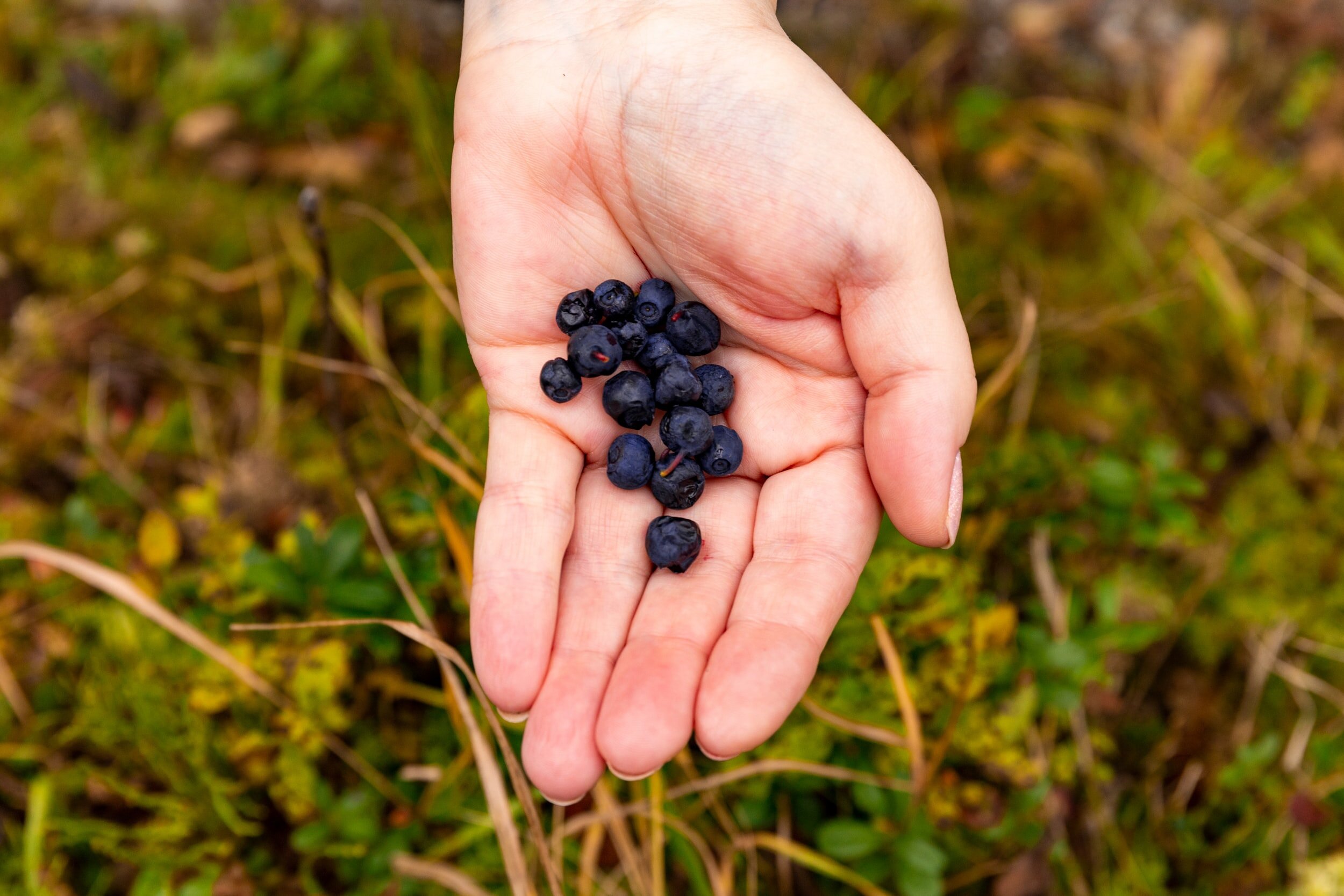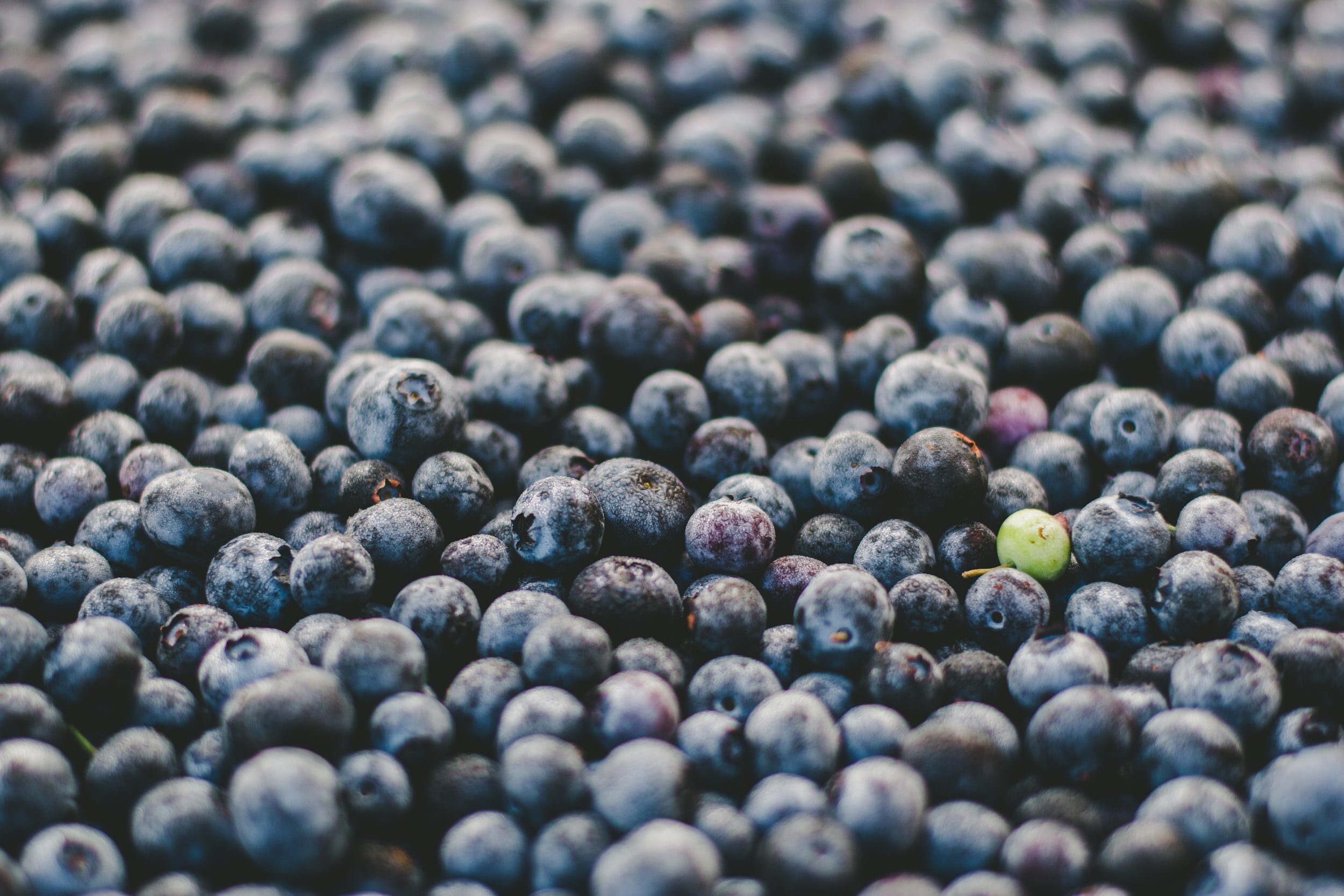The little miracle fruit
BLUEBERRY JAM
I wrote this article about 1 year ago in Dutch and since it is wild blueberry season here in Sweden now I thought I’d translate it. But this first part needed some rewriting since it didn’t make much sense because of some linguistic barriers…
As I was thinking about how to write this article, I remembered when I was a kid we always had a jar of blueberry jam in the house. My mother liked this in combination with cheese on her sandwich. I never was a jam lover but of all the kinds I had tasted, this one was my favorite. Then it occurred to me that we never actually ate the berries themselves. Strawberries, raspberries, blackberries were all regulars on the table, but never (wild) blueberries. Later when I was living on my own and doing my own shopping, I often saw trays with thick blueberries in the shelves of the supermarket and I regularly brought one home with me. Lets eat! But it took me until writing this to realise these are not the blueberries that the jam is made of.
These thick blueberries are only blue on the outside, inside they are actually white. And the ones in the jam are deep purple.
In Dutch it turned out we actually have 2 different names for them. We call the ‘purple’ ones forest berries and in english officially they are called wild blueberries. And the ‘white’ ones are blue berries. That obviously doesn’t help with the confusion. But blueberries and wild blueberries are not the same fruits.
THE WILD BLUEBERRY IS SMALLER. MAX 1 CM AND THEN YOU ALREADY HAVE A GIANT
So to recap. The berries you find in the refrigerator section of the supermarket are American domesticated varieties grown in plant nurseries. These are blueberries. They are larger, grow in clusters on the plant, which also grows much higher than a wild blueberry bush, and the flesh is white. These berries are also very healthy but do not have the extremelypowerful detoxification and protection qualities of the wild blueberry.
The wild blueberry is smaller, maximum 1 cm and then you already have a whopper. The bushes are only half a meter high and the berries hang 1 by 1 on a twig and the most easily recognizable flesh is red to dark purple. They are still harvested from the wild and can usually only be found in the frozen section of the supermarket.
THE INTENSE DARK RED COLOUR
It is that dark red color that makes the wild blueberry so much healthier. Without goinginto too much detail, because I don’t feel like writing scientific articles at all, I will briefly summarize what my research has yielded me. My intention is only to provide information that is helpful and easy to implement for everyone and perhaps prompts thought and further research. If you are interested in this and want to know more about it, Google is your best friend.
The intense color of the wild blueberry is caused by phytonutrients, or simply plant nutrients. Because the plant grows in harsh conditions, the plant has to produce a lot of these substances to protect itself. As a result, it contains 2x more antioxidants, which protect you against cell damage and repair cell damage. The effects are particularly striking in the brain. Research has shown that with daily use, brain chemistry rejuvenates in just a few months. There are also tests that indicate that dementia is reduced and it is even said that Alzheimer’s is slowed down and even improved.
SO MUCH MORE THAN A SLIMMING PRODUCT
One of these antioxidants is manganese, which contains 8x more. This trace mineral helps promote bone health, reduces inflammation, has a role in metabolism, and regulates blood sugar. As a bonus, the berry also contains 30% less sugar!
That makes it a fruit with a low glycemic index, which means that people who can eat very little sugar can add it to their diet. You shouldn’t miss out on them for the calories either, because a cup contains only 80 kCal. Not convinced yet? There are even studies that indicate that long-term daily intake reduces your belly fat.
Although many people are very happy with the idea of losing weight and belly fat, I do not want to reduce our berry here to yet another miracle weight loss product because it can do so much more. There are studies that show that it inhibits cancer growth, restores the inner wall of blood vessels in case of metabolic problems, lowers bad cholesterol and blood pressure, improves digestion and promotes bowel movements (2x as much fiber), …
IT ACTUALLY COMES TO YOUR AID WHERE YOU NEED IT
In his book Medical Medium, Antony William writes about the unparalleled ability of the blueberry to detoxify heavy metals, specifically in the brain, as well as repair the oxidative damage caused by the metals and their removal. He also says that the berry
has adaptogenic capacity although it is not recognized for this. This means that it comes to the rescue wherever you can use it and thus helps to restore the intestinal flora and the liver.
Last year in Belgium I wrote this: Although the bushes used to be very numerous, I must confess that I do not know of any in my area. If you do know it, let me hear from you. The berries are ready to pick in June and July! Yes, I know this article comes a little late for that, but there’s always next year and otherwise the frozen versions are great for turning into smoothies, and if you don’t have those either, you can always use the powdered form.
Yet now we live in Sweden in a super tiny village with like 10 houses surrounded by forest. Since we are up pretty high north the wild blueberry season is a little later: mid july and august but the forest floor is at certain places completely covered with wild blueberry bushes. So I am gonna go and pick as many as I can!!!
Bon Appetit !!!



